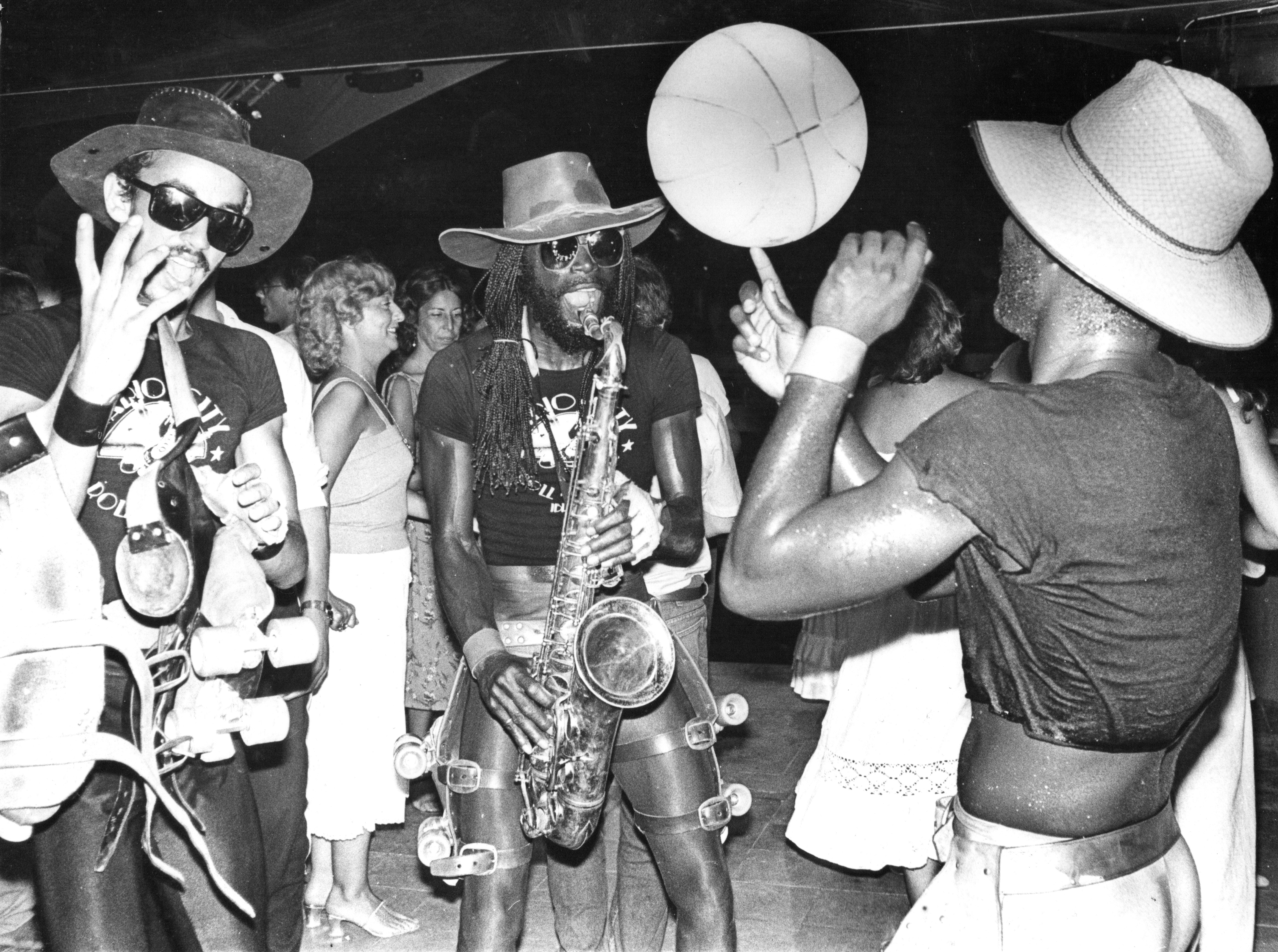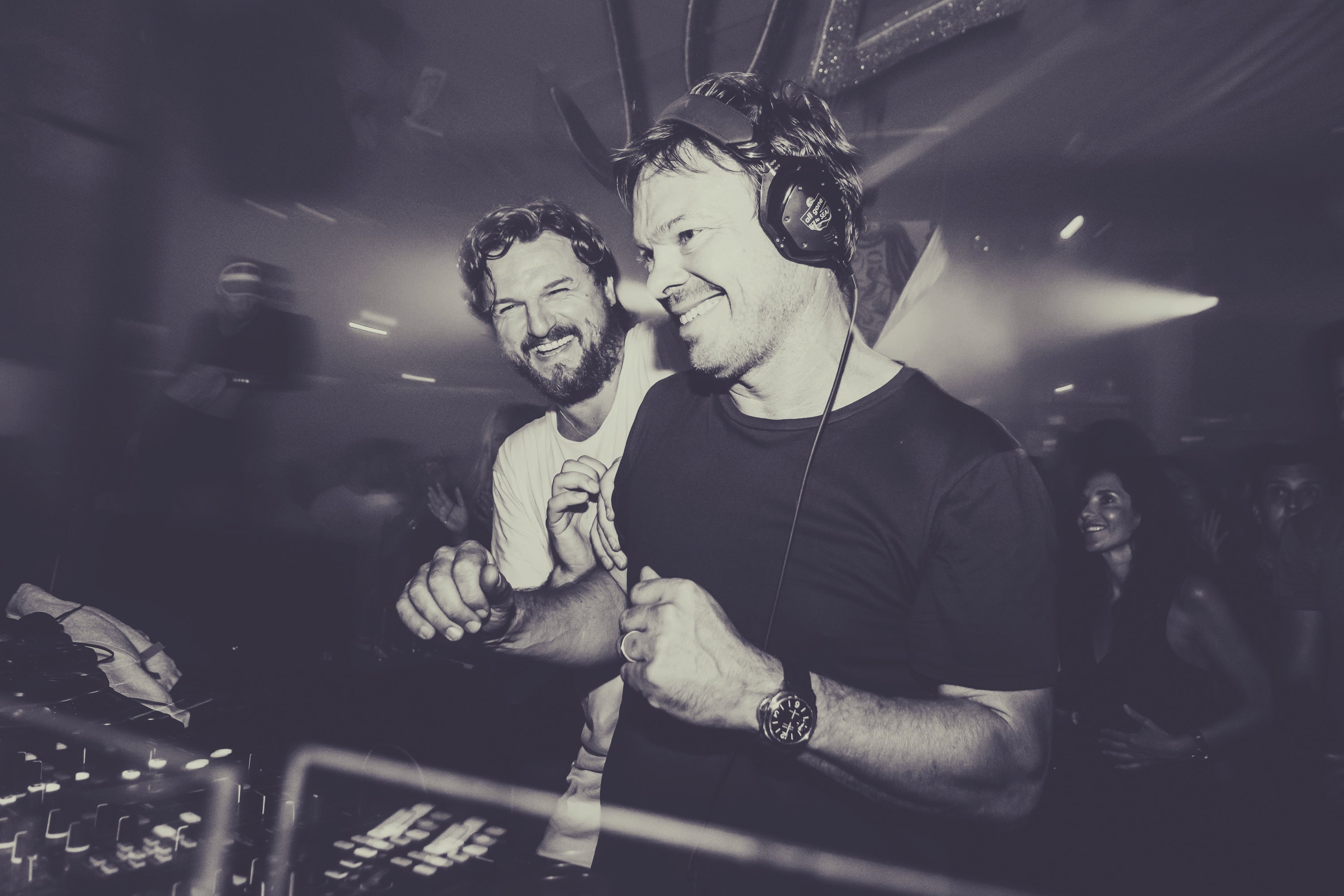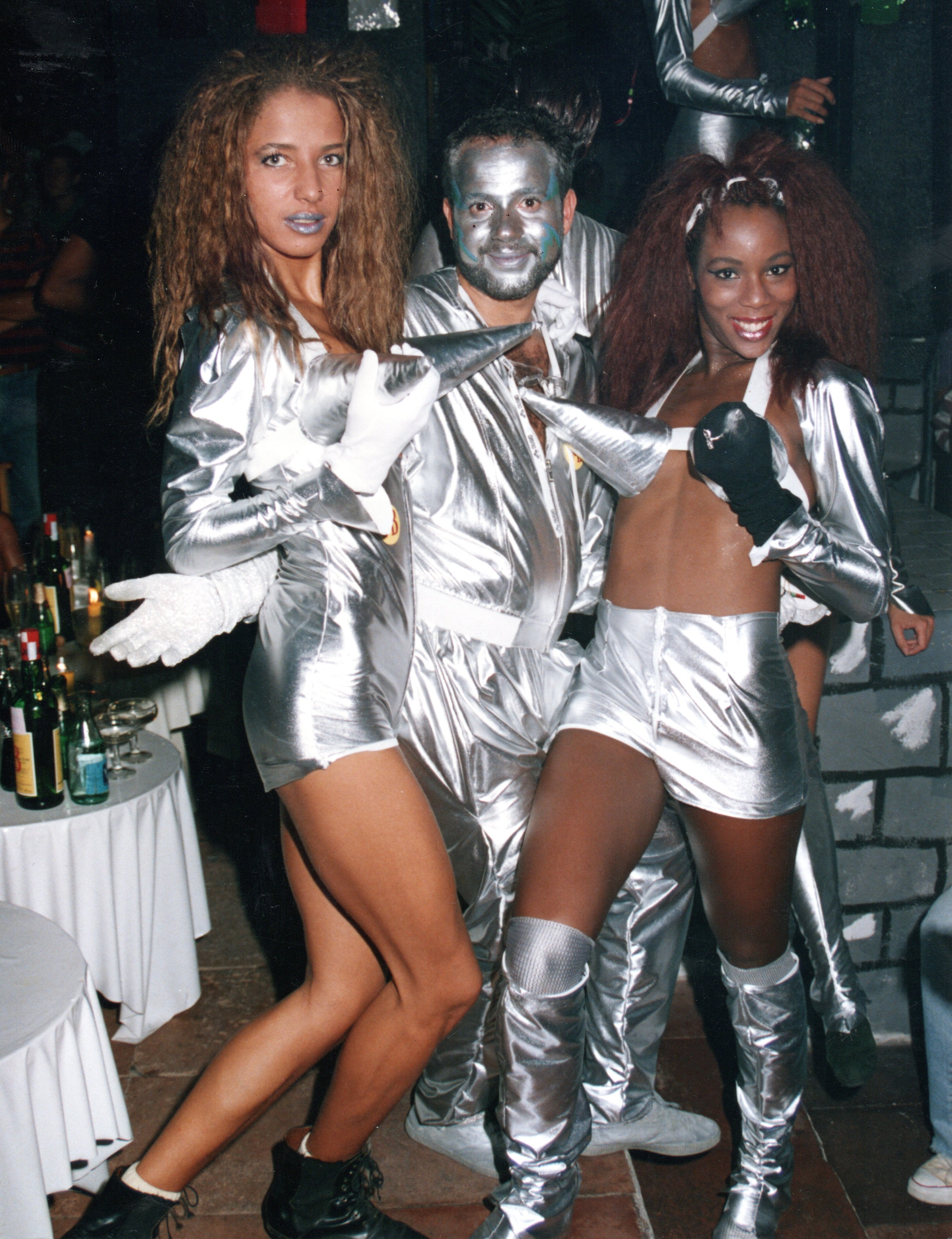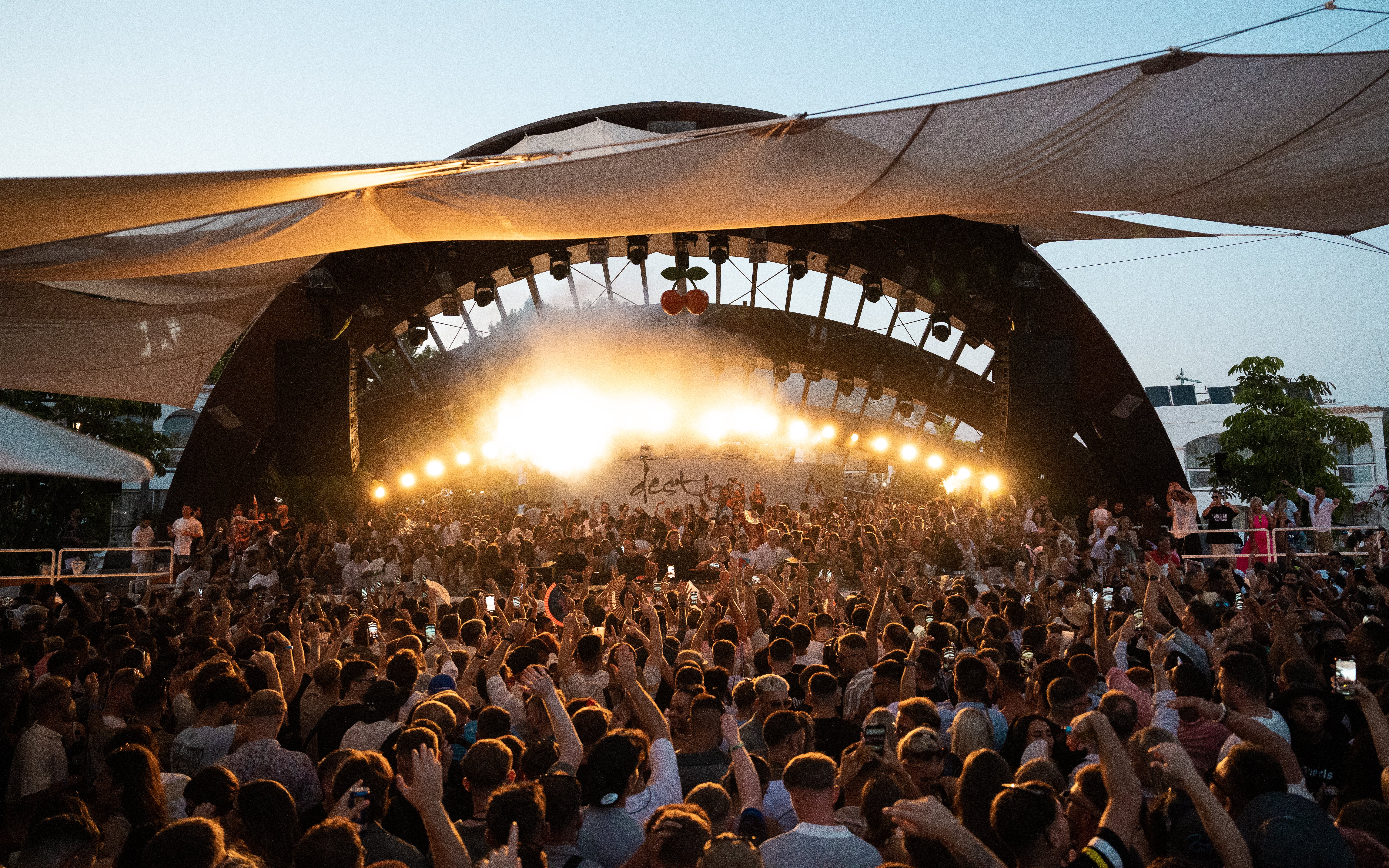Can Ibiza keep its cool club kids as the super-rich move in?
Ben Bryant travels to Europe’s party isle to celebrate 50 years of superclub Pacha and ask if superyachts and celebrities are changing its edge


At around midnight, I wondered if the party was over. It turned out it hadn’t begun. In London, nothing good happens after 2am. In Ibiza, you’re still having dinner.
We were eating foie gras cherries inside iconic club Pacha as part of its 50th anniversary celebrations. Not all clubs have their own restaurant, but at this point, the lines between many of the things I had previously taken for granted – day and night; dance time and nap time; first and fifth cocktail – were becoming increasingly blurry.
The sound system gurgled and thrummed into life a few rooms away and we leant in closer to each other, our faces gleaming with tiny telltale beads of perspiration that clung like a pox all week. We had spent the afternoon dancing to techno DJs Marco Carola and Solomun in front of a man-made lagoon at Destino resort as the sky faded from powder blue to crimson. The crowd was shockingly good looking – awash with fashionistas and the occasional timeless Ibiza stereotype. In front of me, a vista of sheer lace maxi dresses, skin fades and springy ringlets. Behind me, Burberry shorts and a Scarface tattoo.
With an economy that grew more than 15 per cent last year, the island is enjoying an impressive bounceback from the bad days of lockdown. Ibiza is a terrarium for hedonists looking to isolate themselves from the rest of the world. Cocooned poolside on a cabana, you’d struggle to imagine anything beyond it. Aliens could nuke the mainland and we’d dreamily marvel at the cerise fallout, tilting our heads towards the distant throbbing bassline of a billion homes turned to ash.
These days, such unchecked hedonism has haters. Ibiza is a playground for the super-rich, they say, and its clientele are an affront to global climate goals. It cannot survive in a cost of living crisis.
Spain’s eco-activist group “Futuro Vegetal” – vegetable future – has begun targeting the super-rich on the island. In June they began spray painting superyachts, and in July eco activists doused a private jet in paint. As a cost of living crisis bites, can the island survive without losing its soul?
“It’s true Ibiza is becoming more and more attractive to a wealthy clientele,” says legendary DJ Pete Tong. “But they will all get bored very quickly if the island loses its edge.”
Tong, the 63-year-old BBC broadcaster and DJ, has been living and partying on the island for decades, including a five-year residency in Pacha in the early 2000s – so he understands the draw better than most, and the delicate balance it must strike between the creative and the commercial. “Wealthy clientele have been coming to Ibiza for a long time, graduating from the south of France and the Italian Riviera, looking for something with a little more spice and smarter music policy,” he says. “But if Ibiza becomes a turn-off for the club kids and the next generation it will lose some of its attraction for sure.”

Ibiza’s history as a party island can be traced back to the 1960s, when hippies gravitated to the quiet sandy beaches and pine-clad hillsides as a place where they could play music, take drugs and sunbathe nude in peace. Europe’s answer to Big Sur is also the spot where Joni Mitchell wrote the hazy, homesick California from 1971’s Blue. Ibiza underwent a change in the 1970s when the first nightclubs arrived, and two of these in particular – Amnesia, near sleepy San Rafael, and Pacha, near the harbour in Ibiza Town – became superclubs, gradually cementing the island’s status as one of the party capitals of the world. Today there is an entire ecosystem of clubs, from the sweaty confines of warehouse-style DC10 to the relaxed poolside of Ushuaïa to the north side’s cavernous Eden. Arguably none of these nightspots would have been able to stay the course without Ibiza’s origin story, however.

“There’s something about the energy of it being a hippie destination in the Seventies, with all these, like, peace and freedom values, that for some reason, this energy is still alive and... and I think that this is very needed in the world right now,” says Jessica Capaz, the artistic director of Pacha. “I’ve been to Mykonos and Croatia, and other amazing summer destinations, but none of these places will make you feel how anyone that lands in Ibiza will feel. I just know anyone that has got a plane and has landed on the island will feel this special energy as soon as they land.”
The fashionista Annie Doble agrees. Ten years ago she opened her vintage fashion store, Annie’s Ibiza, in the dusty warren of streets that climbs up to the cathedral above Ibiza Town. Today it is a beacon for supermodels, celebrities and socialites, from Annie’s friend Kate Moss to singer Rita Ora. “That feeling of freedom in Ibiza brings everyone together,” she tells me.
The British-born Doble might be considered one of the beneficiaries of the island’s gentrification, which has propelled her humble shop to cult status. She remembers a time on the island when things were quite different, though. “When I was 17, I used to live in this tiny little farmhouse in San Rafael with chickens,” she says. “I used to curl my hair to go out in the evening and the generator would always go off. So I would have to cycle to the petrol station to fill up the generator with petrol so that I could carry on curling my hair.”
If London has learnt anything from gentrification, though, it’s that once the rich move in, the creatives are priced out. From Shoreditch to Peckham, over time every cool club becomes another white elephant – and there is seemingly nothing that can be done to prevent the increasing entropy of cool.
In Ibiza, the canaries in the coal mine are arguably the club kids. It remains a place that is more strongly associated with gurning twentysomethings than billionaires (or the erstwhile hippies). Club-loving Sarah is a regular summer visitor now in her eighth year – but she agrees that it’s expensive and easy to spend thousands.
“If you hire a villa with 10 friends it’s pretty affordable compared to the hotels,” she says. “Maybe it’s 600 Euros each for a week rather than 500 a night or whatever. We would go to the clubs two or three times max and only ever have one drink in there. We took a lot of drugs though. Our dealer would pick us up from the airport and take us to the villa.”
Drugs are of course the worst-kept secret on the island. Pills and MDMA continue to be popular, but cocaine is increasingly passé, and ketamine is increasingly favoured. Over time, drug trends have come and gone, although DJs like Tong insist that they have no impact on the music. “The environment of the club and time of day or night affect the way I play – not the (altered) state of the audience,” he says.

The British – still one of the largest contingents of tourists – are particularly famous for their lively and well-oiled nature. “It’s true that they have a different character,” says Pablo Ghebard, an assistant general manager at Pacha. “They love to drink a lot and they party hard. They spend all their energy dancing and they’re a bit more… I would say… more eccentric.”
Pablo is Pacha’s VIP manager. As a man who effectively has to attend parties every night, he is one of the few reliably sober observers of club culture on the island. “I definitely limit my drinks,” he says. “My limit is one or two shots per night – and usually it’s none of them. I just drink water and focus on work.”
Much of Pablo’s work involves chaperoning VIP clients and meeting their requests – which run on a scale from predictable to diva-esque. “Once a very famous singer came to the club and she said, ‘OK, I want to stay, but what I really need is two plates of very special caviar.’
“The problem is it was like three or four o’clock AM. It took us a long time to find it and to get it, but we did. And she sat drinking Dom Perignon and eating caviar at close to €1,000 a plate.”
The largest drinks bill anyone has run up? One billionaire last year spent €200,000. “He was ordering bottles, and not cheap ones. For the whole club. The whole club.”

For even more outré requests there are now concierges on the island. Serena Cook is one such “super-fixer” with a remit for just about anything. Cook’s business Deliciously Sorted has four tiers of service, costing €1,000 to €5,000 a week. She is most commonly called upon to source restaurant reservations, since obtaining a coveted table in Ibiza sometimes requires an iron will, an exchange of favours and a hushed incantation from an accomplished bookings-whisperer. Not all guests are so easy to please, however. “We’ve had things that are just kind of hilarious. Guests who want to watch the football while in their swimming pool, so therefore need a massive screen in the shade.”
Cook often deals with celebrity clients and VIPs who want to party without being seen. “I always say don’t take a boat – because the paparazzi headquarters is the marina,” she tells me. “The main guy has a penthouse apartment and he’s got long lenses on the roof of his apartment building.”
From the vantage point of the steep flats lining Ibiza Town’s marina, there are panoramic views all the way to Formentera – a tranquil island retreat nearby that is constantly orbited by superyachts. One skinny sandbar in particular that stretches from the northernmost tip to the neighbouring island of S’Espalmador is irresistible for influencers – and a honeypot for paparazzi.
“The best way to stay hidden is in the thick of the crowd,” Cook confides. “It’s still possible to party and not be seen if you take precautions. You have to wear a lot of face paint.”

Hiding in plain sight doesn’t always go to plan. Less than a month ago Australian Producer and DJ Fisher uploaded a video of himself smuggling Hollywood A-lister Chris Hemsworth through the crowds at cutting-edge club Hï. Dressed in the incognito celebrity’s preferred uniform of a black baseball cap and large sunglasses, Hemsworth was in public for what looked like mere minutes – and he still appeared to get recognised by at least one clubber.
Not every celebrity is looking to go lurk, however. “When I first looked after Paris Hilton, which was 2005, I asked her: do you want to be seen or not?” says Cook. “And she told me, ‘I want to be seen. I want to become a DJ and I want to DJ the foam party in Amnesia.’ Five years later, she was doing it.”
Foam parties – where giant fans are used to blast thick clouds of bubbles into the crowd – are sensationally still a fixture of Amnesia, although Paris Hilton is sadly not. Her “Foam & Diamonds” residency ended in 2018. Hilton is, of course, a successful DJ in her own right, but celebrities are generally preferred in the crowd rather than on the decks. It is part of Ibiza’s secret ingredient, according to Cook: glamour. “I remember the first night that I ever went to Pacha, and I just thought it was the most glamorous club in the entire world,” she says. “It’s what sets it apart from places like Berlin. Ibiza doesn’t have a dark underground.”
It is also, perhaps, what gives the island its mass appeal. Cook’s clients are occasionally some of the most well-heeled looking to cut loose – although you’re unlikely to see them in a suit. “You might get the bankers,” she says. “But you don’t get the boring bankers.” Some of Cook’s clients even bring the whole family. “Now it’s the kids who are wanting to go to Ushuaïa rather than the parents,” says Cook. “But the parents still come because they can.”
From the middle of the Pacha’s dancefloor, I notice one or two people surely in their sixties, arms aloft and pupils like saucers. Then we are suddenly belched out into moonlight. The dancefloor purrs appreciatively behind us. Day and night, parent and teenager, even banker and club kid – all these oppositions currently seem resolvable in Ibiza. Though I’m not sure I’d take my mum.






Join our commenting forum
Join thought-provoking conversations, follow other Independent readers and see their replies
Comments